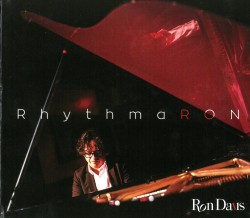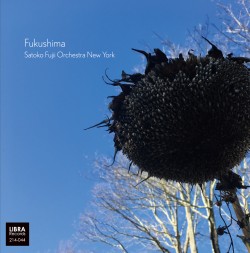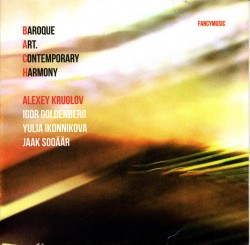Arguably the most important and least understood sound of the 20th century, Free Music, which combined jazz’s freedom with notated music’s rigour while aiming for in-the-moment creation, has now been around for almost six decades. With its advances now accepted as part of the ongoing sonic landscape, long out-of-print recordings are being reissued and reappraised for their excellence.
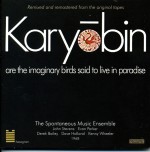 One of the most important, The Spontaneous Music Ensemble (SME)’s Karyōbin are the imaginary birds said to live in paradise (Emanem 5046 emanemdisc.com), has maintained its reputation since 1968. That’s because, like the first viewing of Jackson Pollock’s action paintings, it signalled that an entirely new sound had arrived from the United Kingdom. Karyōbin is also an all-star session, featuring players who would epitomize exploratory sounds for years: soprano saxophonist Evan Parker, guitarist Derek Bailey, drummer John Stevens and bassist Dave Holland from the UK, and Canadian Kenny Wheeler, already established as one of England’s most accomplished trumpeters. Amazingly Wheeler didn’t abandon the lyrical quality he developed, and his graceful bursts easily lock in with Parker’s slinky tone, which even this early is sui generis. With Stevens patting cymbals and faintly slapping drum tops and Holland pulsating, Bailey’s metallic plinks are most discordant, although his steel-guitar-like reverb isn’t upfront until Part 3. Twanging guitar licks intensify on the subsequent tracks, but the trumpeter’s hummingbird-like flutters and the saxophonist’s perceptive breaths cleanly fit into the spaces left by the others, with the bassist’s strong pulse suggesting why he was recruited by Miles Davis. Distinctively a group effort, by the CD’s defining Part 5, broken-octave guitar licks and slowly unfolding reed vibrations complement one another as the trumpet stutters out sour notes while moving the pitch upwards. Eventually clipped guitar strokes and thin saxophone trills adumbrate and complete Stevens’ rivet cymbal, gong and snare intrusions to reach a harsh polyphonic climax. Splattered percussion crackles, lengthening airy textures from the horns and a general diminishing of tone mark Part 6 as the CD’s coda and confirmation that a new sound has germinated.
One of the most important, The Spontaneous Music Ensemble (SME)’s Karyōbin are the imaginary birds said to live in paradise (Emanem 5046 emanemdisc.com), has maintained its reputation since 1968. That’s because, like the first viewing of Jackson Pollock’s action paintings, it signalled that an entirely new sound had arrived from the United Kingdom. Karyōbin is also an all-star session, featuring players who would epitomize exploratory sounds for years: soprano saxophonist Evan Parker, guitarist Derek Bailey, drummer John Stevens and bassist Dave Holland from the UK, and Canadian Kenny Wheeler, already established as one of England’s most accomplished trumpeters. Amazingly Wheeler didn’t abandon the lyrical quality he developed, and his graceful bursts easily lock in with Parker’s slinky tone, which even this early is sui generis. With Stevens patting cymbals and faintly slapping drum tops and Holland pulsating, Bailey’s metallic plinks are most discordant, although his steel-guitar-like reverb isn’t upfront until Part 3. Twanging guitar licks intensify on the subsequent tracks, but the trumpeter’s hummingbird-like flutters and the saxophonist’s perceptive breaths cleanly fit into the spaces left by the others, with the bassist’s strong pulse suggesting why he was recruited by Miles Davis. Distinctively a group effort, by the CD’s defining Part 5, broken-octave guitar licks and slowly unfolding reed vibrations complement one another as the trumpet stutters out sour notes while moving the pitch upwards. Eventually clipped guitar strokes and thin saxophone trills adumbrate and complete Stevens’ rivet cymbal, gong and snare intrusions to reach a harsh polyphonic climax. Splattered percussion crackles, lengthening airy textures from the horns and a general diminishing of tone mark Part 6 as the CD’s coda and confirmation that a new sound has germinated.
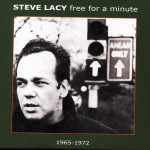 Unlike the UK-identified members of the SME, American soprano saxophonist Steve Lacy, primarily a jazzer, became a major force in Free Jazz once he expatriated and collaborated with European players. Free for a Minute (Emanem 5210 emanemdisc.com), is a two-CD set that bookends Karyōbin, with tracks recorded by several-sized combos in 1965, 1966, 1967 and 1972. Tellingly, the nine tunes from 1965, featuring bassist Kent Carter and drummer Aldo Romano, are Carla Bley, Thelonious Monk and Cecil Taylor compositions, as well as Lacy originals (which are the most tuneful of the lot). Bley’s Generous 1 for instance includes a walking bass line, over which the saxophonist squeezes out a melody that becomes a rhapsodic multi-note soprano showcase aided by echoing cymbals. There’s full-fledged triple interaction among string pulls, reed puffs and meandering drum beats on Lacy’s There We Were; however Taylor’s Tune 2 is the most impressive track. With bass and drums operating on slow boil, the saxophonist’s peeping and puffing provide the piece with timbral shading as it accelerates to emotive joy prodded by tongue percussion. Since most time-in at around the one-minute mark, the 13 subsequent tracks recorded as cues for the unreleased 1967 film (Free Fall) are utilitarian to the nth degree, despite the stellar lineup of Lacy, Carter, trumpeter Enrico Rava, drummer Paul Motian and vibist/pianist Karl Berger. Less than sketches and mostly consisting of drum rattles, vibes pops and reed shrills, only Cue 30 is enlivened with a pseudo-Dixieland beat, while Cue 24 and Cue 25, which together last six minutes, set up a broken-octave challenge with graceful tweets from Rava and choked blasts from Lacy, unrolling alongside metal bar slaps from Berger and focused rolls from Motian. This set’s highpoint is CD2, with a 1966 date where six Lacy originals are played by the composer, Rava, Carter and Romano, as well as three previously unissued 1972 tracks, with a lineup of Lacy and Carter with saxophonist Steve Potts, cellist Irene Aebi and drummer Noel McGhie. Still influenced by Monk, a 1966 quartet piece like Sortie judders and jumps as scrubbing bass strings and supple drum ruffs move in pseudo-march-time as frontline tones intertwine. Ebullient and sharp, the trumpet tones gradually ascend, where they’re met by effervescent saxophone patterns. Chromatically outlining Fork New York’s theme, seconded by a purring obbligato from Rava, Lacy’s supple tone has taken on the unique colouration it would maintain until his demise. As the trumpet pitch gets peppier and brassier, it mixes with the saxophone’s lubricated contralto tone to create the equivalent of smooth spreading mustard. Subsequent contrapuntal theme elaborations don’t prevent the track from cantering to a slick and satisfying end. Content with the quintet format he would maintain for several decades, Lacy’s compositional aims expanded synchronously and became more dissonant by 1972. Consummate Free Jazz, The Rush races by at steeplechase speed, with the cello’s staccato sawing setting off a paroxysm of reed split tones and roistering glossolalia. The two-part The Thing divides between Lacy’s pinched vibrations and Potts’ low snarls, which barrel along expressing polyphonic variations. With The Thing part 1 finally slowed down for slippery stops from the cellist and bassist, The Thing part 2 is extended with a multiphonic explosion that takes in the alto saxophonist’s hardened narrative, dog whistle-like shrills from the soprano and multiplied cymbal clashes plus resonating stropping from the strings. Like the ending of a romance novel, the finale features reed kisses and cello sighs.
Unlike the UK-identified members of the SME, American soprano saxophonist Steve Lacy, primarily a jazzer, became a major force in Free Jazz once he expatriated and collaborated with European players. Free for a Minute (Emanem 5210 emanemdisc.com), is a two-CD set that bookends Karyōbin, with tracks recorded by several-sized combos in 1965, 1966, 1967 and 1972. Tellingly, the nine tunes from 1965, featuring bassist Kent Carter and drummer Aldo Romano, are Carla Bley, Thelonious Monk and Cecil Taylor compositions, as well as Lacy originals (which are the most tuneful of the lot). Bley’s Generous 1 for instance includes a walking bass line, over which the saxophonist squeezes out a melody that becomes a rhapsodic multi-note soprano showcase aided by echoing cymbals. There’s full-fledged triple interaction among string pulls, reed puffs and meandering drum beats on Lacy’s There We Were; however Taylor’s Tune 2 is the most impressive track. With bass and drums operating on slow boil, the saxophonist’s peeping and puffing provide the piece with timbral shading as it accelerates to emotive joy prodded by tongue percussion. Since most time-in at around the one-minute mark, the 13 subsequent tracks recorded as cues for the unreleased 1967 film (Free Fall) are utilitarian to the nth degree, despite the stellar lineup of Lacy, Carter, trumpeter Enrico Rava, drummer Paul Motian and vibist/pianist Karl Berger. Less than sketches and mostly consisting of drum rattles, vibes pops and reed shrills, only Cue 30 is enlivened with a pseudo-Dixieland beat, while Cue 24 and Cue 25, which together last six minutes, set up a broken-octave challenge with graceful tweets from Rava and choked blasts from Lacy, unrolling alongside metal bar slaps from Berger and focused rolls from Motian. This set’s highpoint is CD2, with a 1966 date where six Lacy originals are played by the composer, Rava, Carter and Romano, as well as three previously unissued 1972 tracks, with a lineup of Lacy and Carter with saxophonist Steve Potts, cellist Irene Aebi and drummer Noel McGhie. Still influenced by Monk, a 1966 quartet piece like Sortie judders and jumps as scrubbing bass strings and supple drum ruffs move in pseudo-march-time as frontline tones intertwine. Ebullient and sharp, the trumpet tones gradually ascend, where they’re met by effervescent saxophone patterns. Chromatically outlining Fork New York’s theme, seconded by a purring obbligato from Rava, Lacy’s supple tone has taken on the unique colouration it would maintain until his demise. As the trumpet pitch gets peppier and brassier, it mixes with the saxophone’s lubricated contralto tone to create the equivalent of smooth spreading mustard. Subsequent contrapuntal theme elaborations don’t prevent the track from cantering to a slick and satisfying end. Content with the quintet format he would maintain for several decades, Lacy’s compositional aims expanded synchronously and became more dissonant by 1972. Consummate Free Jazz, The Rush races by at steeplechase speed, with the cello’s staccato sawing setting off a paroxysm of reed split tones and roistering glossolalia. The two-part The Thing divides between Lacy’s pinched vibrations and Potts’ low snarls, which barrel along expressing polyphonic variations. With The Thing part 1 finally slowed down for slippery stops from the cellist and bassist, The Thing part 2 is extended with a multiphonic explosion that takes in the alto saxophonist’s hardened narrative, dog whistle-like shrills from the soprano and multiplied cymbal clashes plus resonating stropping from the strings. Like the ending of a romance novel, the finale features reed kisses and cello sighs.
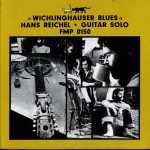 Bailey’s string experimentation encouraged other guitarists, with Hans Reichel one of the most iconoclastic. Recorded in Hagen, Germany in 1973, Wichlinghauser Blues (Corbett vs. Dempsey CvsD CD 033), finds Reichel using a handcrafted 11-string guitar with three pickups and at points extending the sound with a wah-wah pedal, water-glass-on-strings pressure, and on Shaved Guitar working an electric razor along the strings to append a harsh drone to his picking. Less gimmicky, but just as radical, he often mixes simple folk melodies with more radical fare. Krampfhandlungen-1st Version for instance, could be from two guitarists, one slashing bottleneck-like whines and the other strumming quieter but offbeat harp-like arpeggios. Smacking the instrument’s wood at first, Reichel ends the piece with distorted rumbles that suggest a 1960s freakout. Krampfhandlungen-2nd Version is no more than a fraternal twin, with harsh vibrations accelerating to echoing note spills and string hand pumps, then descending to brief clinks without losing chromatic motion. Caustic and menacing, the title tune uses fills to advance the narrative without negating the melody, although every tone comes with an extended echo. Tellingly, the concluding Schlafflied demonstrates his offbeat finger-picking prowess, which stays dissonant even while frequently threatening to break into a folk-pop melody.
Bailey’s string experimentation encouraged other guitarists, with Hans Reichel one of the most iconoclastic. Recorded in Hagen, Germany in 1973, Wichlinghauser Blues (Corbett vs. Dempsey CvsD CD 033), finds Reichel using a handcrafted 11-string guitar with three pickups and at points extending the sound with a wah-wah pedal, water-glass-on-strings pressure, and on Shaved Guitar working an electric razor along the strings to append a harsh drone to his picking. Less gimmicky, but just as radical, he often mixes simple folk melodies with more radical fare. Krampfhandlungen-1st Version for instance, could be from two guitarists, one slashing bottleneck-like whines and the other strumming quieter but offbeat harp-like arpeggios. Smacking the instrument’s wood at first, Reichel ends the piece with distorted rumbles that suggest a 1960s freakout. Krampfhandlungen-2nd Version is no more than a fraternal twin, with harsh vibrations accelerating to echoing note spills and string hand pumps, then descending to brief clinks without losing chromatic motion. Caustic and menacing, the title tune uses fills to advance the narrative without negating the melody, although every tone comes with an extended echo. Tellingly, the concluding Schlafflied demonstrates his offbeat finger-picking prowess, which stays dissonant even while frequently threatening to break into a folk-pop melody.
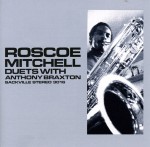 Toronto’s Sackville Records regularly documented jazz advances in the 1970s, including Roscoe Mitchell’s Duets with Anthony Braxton (Delmark/Sackville SK 3016 delmark.com). Each plays a woodwind factory’s collection of reeds and flutes while interpreting five Mitchell compositions and three by Braxton. Despite graphic score titles, it’s the Braxton pieces that are more approachable. In fact Composition 40Q finds two bass saxophones waddling in tandem to a march-like tempo. Weaving elephantine snorts and farts together, the circus-style theme is briefly interrupted by reed peeps and slides before ending with more basement pitches. Completed with full, rounded tones which complement one another’s output, Composition 74B manages to link curlicue wiggles and circular breathing from paired flutes while maintaining an underlying rhythm. However, Composition 74A, the third and longest Braxton line, depends on both players instantaneously switching from flute to baritone sax to alto saxophone and on to other horns, affiliating and breaking apart timbres as one limns the melody and the other decorates it. Mitchell’s lengthy Cards: Three and Open is another superior track, with the woodwind/flute assemblage constantly pivoting from decorous piccolo pitches or altissimo reed bites to the huffing and puffing of subterranean-pitched saxophones. Modulating forward, during which each player seemingly surprises with new information, this penultimate sequence is all bellows until a sudden swing section wraps things up. Additionally, while high-pitched microtonal harmonies undulate through Five Twenty One Equals Eight, the two versions of Seven Behind Nine Ninety-Seven Sixteen or Seven, one previously unreleased, scream and judder with the dissonant audacity of 1960s Free Jazz. Somehow though, the alternating foghorn snorts and altissimo overblowing mutate into definite statements. The value of reissues like these is that those who weren’t around to experience the music first-hand can now hear what caused all the excitement.
Toronto’s Sackville Records regularly documented jazz advances in the 1970s, including Roscoe Mitchell’s Duets with Anthony Braxton (Delmark/Sackville SK 3016 delmark.com). Each plays a woodwind factory’s collection of reeds and flutes while interpreting five Mitchell compositions and three by Braxton. Despite graphic score titles, it’s the Braxton pieces that are more approachable. In fact Composition 40Q finds two bass saxophones waddling in tandem to a march-like tempo. Weaving elephantine snorts and farts together, the circus-style theme is briefly interrupted by reed peeps and slides before ending with more basement pitches. Completed with full, rounded tones which complement one another’s output, Composition 74B manages to link curlicue wiggles and circular breathing from paired flutes while maintaining an underlying rhythm. However, Composition 74A, the third and longest Braxton line, depends on both players instantaneously switching from flute to baritone sax to alto saxophone and on to other horns, affiliating and breaking apart timbres as one limns the melody and the other decorates it. Mitchell’s lengthy Cards: Three and Open is another superior track, with the woodwind/flute assemblage constantly pivoting from decorous piccolo pitches or altissimo reed bites to the huffing and puffing of subterranean-pitched saxophones. Modulating forward, during which each player seemingly surprises with new information, this penultimate sequence is all bellows until a sudden swing section wraps things up. Additionally, while high-pitched microtonal harmonies undulate through Five Twenty One Equals Eight, the two versions of Seven Behind Nine Ninety-Seven Sixteen or Seven, one previously unreleased, scream and judder with the dissonant audacity of 1960s Free Jazz. Somehow though, the alternating foghorn snorts and altissimo overblowing mutate into definite statements. The value of reissues like these is that those who weren’t around to experience the music first-hand can now hear what caused all the excitement.
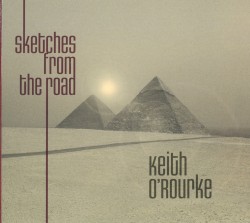 Sketches from the Road
Sketches from the Road

